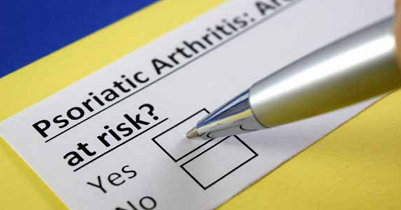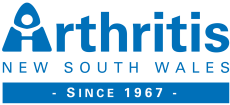What is psoriatic arthritis?

Psoriatic arthritis is a condition that causes inflammation of the joints. This causes the joints to become painful, stiff and often swollen. Around one in ten people who have a skin disease called psoriasis develop psoriatic arthritis. Sometimes the arthritis appears before or at the same time as the psoriasis, but for most people the joint problems occur after the skin condition. While psoriatic arthritis tends to affect different people in different ways, early symptoms may include swelling, heat, tenderness, pain or stiffness in your joints. It affects men and women equally and can occur at any age.
What causes psoriatic arthritis?
Like many forms of arthritis, the causes of psoriatic arthritis are not fully understood. While there is no clear pattern of inheriting psoriatic arthritis, a family history of psoriasis or psoriatic arthritis does seem to be an important risk factor in around 40% of people who develop the disease. The onset of psoriasis and psoriatic arthritis can also be triggered by other factors, including smoking and a range of infections and viruses. Whatever starts the process, the main problem in psoriatic arthritis is that your body’s immune system begins to target your joints. Usually the immune system protects you against infections, but in psoriatic arthritis it mistakenly treats the tissue of your joints as ‘foreign’. This can lead to inflammation in the joint causing the symptoms of arthritis. If it is not treated it can cause permanent and irreversible damage to your bones and joints. Early treatment of psoriatic arthritis is important in reducing the risk of damage to the joints. Inflammation also targets the structures in the skin and nails.
How will psoriatic arthritis affect me?
Psoriatic arthritis affects people in different ways. Sometimes only a single joint is affected, while for some people many different joints across the body can be affected.
Symptoms may include:
- a finger or toe that swells like a small sausage — this is called dactylitis
- the spine (backbone) may become inflamed, resulting in back pain and stiffness — this is called spondylitis
- pain in places where muscles and tendons attach to your bones (enthesitis), especially at the back of the heel and in the sole of the foot
- skin rash
- red, sore eyes
- your fingernails or toenails may become thick, pitted or change colour
There is no current ‘cure’ for psoriatic arthritis, but for most people it can be controlled with ongoing care. Whatever your symptoms, many people find that the disease comes (flares) and goes (remission) over many years. Remission — the control of symptoms and a return to normal function — is the goal of treatment and can be achieved for many people with psoriatic arthritis.
How will my doctor diagnose psoriatic arthritis?
There is no single test for psoriatic arthritis. A doctor will diagnose the condition from your symptoms, a physical examination and they may order a blood test to check for signs of inflammation. Early diagnosis and treatment can reduce the impact of the disease, so if a doctor thinks you may have psoriatic arthritis they may refer you to a specialist doctor called a rheumatologist as early as possible. Rheumatologists look at the results from many tests to help them decide whether a person has psoriatic arthritis.
Your rheumatologist may :
- talk to you about your symptoms, including where and when you feel joint pain

- carefully check your skin and nails, and ask about any family history of skin problems
- examine your hands, feet, spine and other joints for swelling, heat or tenderness
- take a blood sample to check for inflammation. Blood tests may also help rule out other types of arthritis
- send you to a radiologist for an x-ray or MRI of the affected joints
For a practical guide to treatments, services and lifestyle choices, download our booklet Taking Control of your Psoriatic Arthritis here.
Arthritis NSW – we’re here to help
We’re here to help whenever you need us. We have a variety of options available for support and information.
- For more BLOG articles about managing your arthritis, please visit our News page here.
- Sign up to eNews to get information and advice on managing your condition
- Call our free helpline on 1800 011 041 (Monday to Friday, 9am to 5pm)
- Join our online community: Follow us on Facebook or Instagram
- Subscribe to our magazine, more info here
- Become a member, more info here
